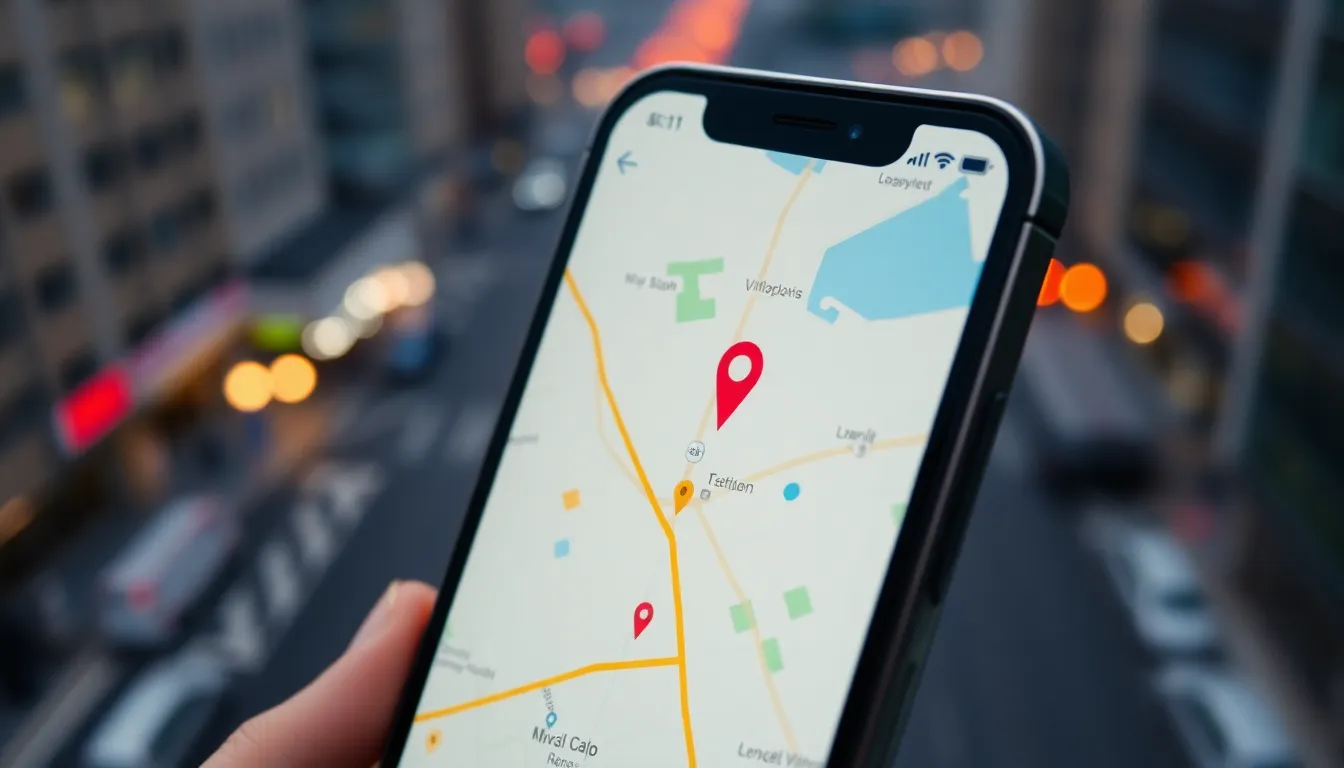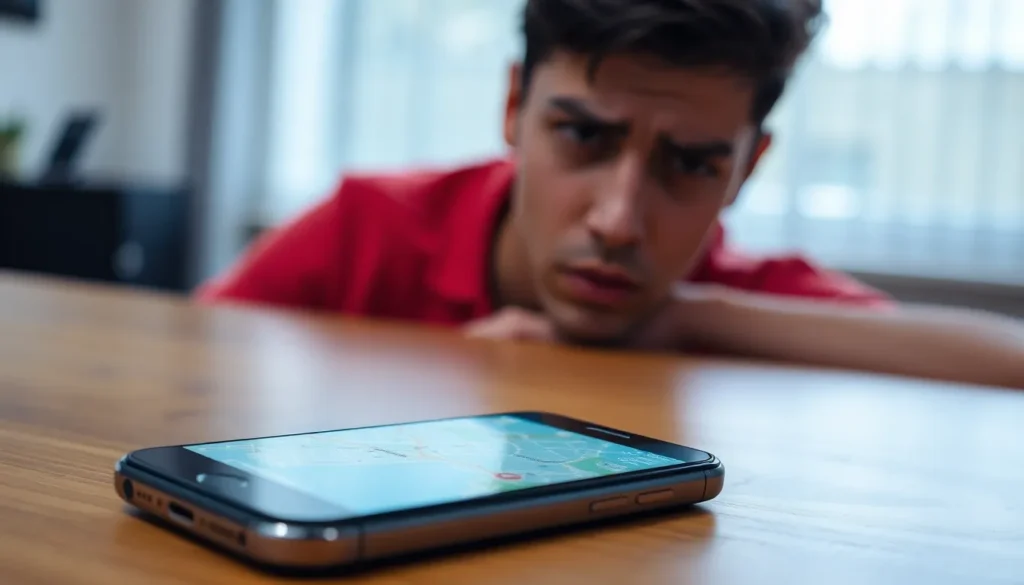Table of Contents
ToggleIn a world where we rely on our smartphones for everything from navigation to keeping in touch, the thought of losing an iPhone can send shivers down anyone’s spine. But what happens when that trusty device goes dark? Can it still be tracked when it’s off? Spoiler alert: the answer isn’t as straightforward as one might hope.
Imagine this: you misplace your iPhone, and it’s not just playing hide and seek; it’s gone completely silent. You might picture your phone plotting its escape like a rebellious teenager. Yet, understanding how tracking works—even when your iPhone is off—can save you from the panic of a missing phone. Let’s dive into the techy depths of this mystery and find out if your phone’s secret life can still be uncovered, even when it’s taking a nap.
Overview of iPhone Tracking
Tracking an iPhone involves several technological processes that clarify how location services work. Apple has implemented advanced features like Find My iPhone to assist users in locating their devices. This tool remains effective even if the phone is out of battery or turned off, enabling users to track its last known location.
When the iPhone is powered off, it cannot transmit real-time location data. Instead, the device must communicate its last recorded position before it switched off. This capability relies on network connectivity and GPS functionality that actively records the device’s whereabouts. Users can access this information through the Find My app, which displays the most recent location on a map.
iPhones utilize Bluetooth technology to enhance tracking accuracy. Location services leverage nearby Wi-Fi networks to pinpoint the phone’s position more precisely. Multiple users also contribute to this collective tracking system, which utilizes anonymized location data from other Apple devices.
With the introduction of Apple’s Ultra Wideband technology, indoor tracking becomes more feasible. This technology provides accurate location tracking in areas where GPS may falter, such as buildings or densely populated zones. Such advancements symbolize Apple’s commitment to improving user experience regarding device recovery.
In cases where an iPhone is stolen, users can enable Activation Lock, which links the device to the owner’s Apple ID. This feature ensures that unauthorized users cannot access the device, adding another layer of security. Tracking a device through Find My iPhone elicits an alert to notify others that the device has been reported lost.
Overall, while tracking an iPhone when off can pose challenges, available technologies mitigate these difficulties, ensuring users have options to locate their devices.
Tracking Technology Used by iPhones

iPhones utilize several advanced technologies for tracking purposes. Understanding these systems sheds light on how tracking remains effective, even when a device is turned off.
GPS and Location Services
GPS plays a crucial role in determining an iPhone’s location. It relies on satellite signals to pinpoint locations with accuracy. Location services further enhance this capability by using nearby cell towers and Wi-Fi networks. Users retrieve the last known location through these services, which remains accessible even if the phone is powered off. Cellular capabilities allow devices to send location data periodically, even when in a low-power state. This information aids users in attempting to locate a missing device.
Find My iPhone Feature
Find My iPhone is a vital feature for tracking lost devices. This tool allows users to access their device’s last known location through the Find My app. Once activated, it communicates the position prior to the phone being turned off. Activation Lock secures devices from unauthorized access, linking them to the user’s Apple ID. Notifications will alert users if a device re-establishes a connection, providing peace of mind. Even while offline, the device’s last location displays on the map, facilitating potential recovery efforts.
Can iPhone Be Tracked When Off?
Tracking an iPhone when it’s off presents unique challenges. Users often wonder about the possibilities and limitations of this feature.
Technical Limitations
iPhones can’t transmit live location data when turned off. Instead, the last recorded position remains available, dependent on prior connectivity to networks and GPS. Without power, Bluetooth and Wi-Fi networks also cease communication, cutting off additional tracking capabilities. Apple’s technology relies heavily on a combination of GPS and network signals to obtain accurate locations. If the device lacks connectivity before shutting down, it won’t send any location data. Essentially, users can access the last known location through the Find My app, but real-time tracking becomes impossible when the device is off.
Scenarios When Tracking Is Possible
Tracking is feasible under specific conditions even when the iPhone is off. Prior to shutting down, if the phone is connected to Wi-Fi or cellular networks, the last recorded location remains retrievable. Users can access this information through the Find My iPhone feature. Activation Lock also plays a role, linking the iPhone to the user’s Apple ID. If the device turns off close to a strong Wi-Fi network, its last known location can update right before it powers down. Additionally, iPhones in low-power mode maintain basic connectivity, enabling some location updates until the battery fully depletes.
Implications of Tracking an Off iPhone
Tracking an iPhone that’s turned off raises important issues surrounding privacy and legality. Users must be aware of how their data is managed and protected.
Privacy Concerns
Privacy remains a significant concern when it comes to tracking devices. Users may feel uneasy about their location data being accessible, even if their phones are off. Apple prioritizes user privacy and implements encryption measures for data transmission. Deactivating location services can limit tracking capabilities. While Find My iPhone provides last known locations, this data may still be vulnerable if accessed by unauthorized parties. Understanding these privacy implications is essential for users who value personal data security.
Legal Considerations
Legal aspects associated with tracking an off iPhone are critical to comprehend. Laws regarding tracking vary by jurisdiction. Unauthorized tracking of a device can lead to legal repercussions. Apple emphasizes the need for user consent in tracking situations, ensuring compliance with privacy laws. Users should familiarize themselves with local regulations regarding device tracking, particularly in cases of theft or loss. Legal clarity may help users navigate the complexities of technology and their rights.
Tracking an iPhone when it’s turned off presents unique challenges but isn’t impossible. Users can rely on the last known location provided by the Find My app to ease concerns about a lost device. Technologies like GPS and Bluetooth enhance tracking capabilities, even in low-power states.
While privacy and legal considerations are crucial, Apple prioritizes user consent and security. Understanding these elements empowers users to navigate the complexities of tracking their devices effectively. With the right tools and knowledge, locating an iPhone, even when off, becomes a more manageable task.




